Standard engines in new street Cobras meant using Ford 4100-A type carburetors Ford Motor Company installed in the Cleveland Ohio engine plant. Optional carburetors and ancillaries are not covered in this file.
Experimental High Performance 260 (XHP-260) Engines
Engineering prototype assembly, automatic choke. (New Cobra picture 1962 photographer unknown.)
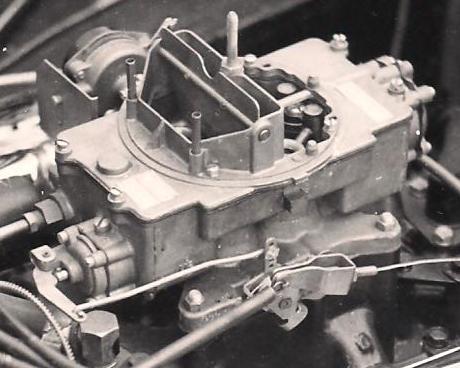
High Performance 260 (HP260) Engines
C3AF-9510-S automatic choke. (The assembly tag is missing in the picture below.)
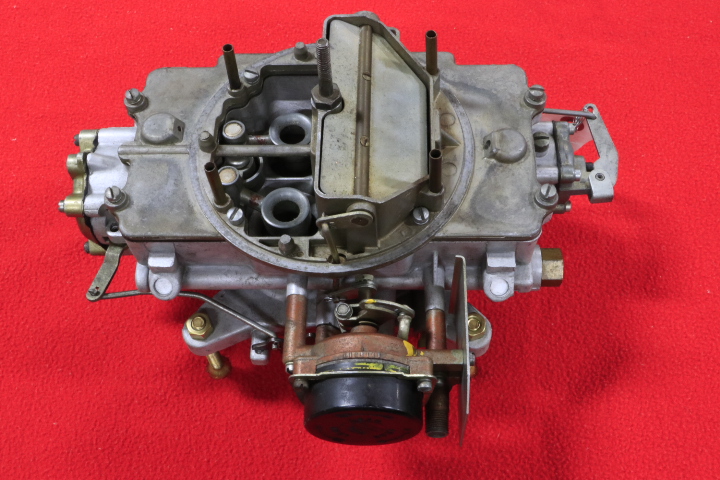
High Performance 289 (HP289) Engines
C3OF-9510-AB automatic choke, start of HP289 engine production March 1963 until sometime in mid to late May 1963.
(no picture available)
C3OF-AJ (1963¾ assembly version) automatic choke, sometime in mid to late May 1963 through about through June 1963 engines. (No HP289 engines were made in July 1963.) Probably used in early 1964 model year engines but no intact Cobra has been available to study.
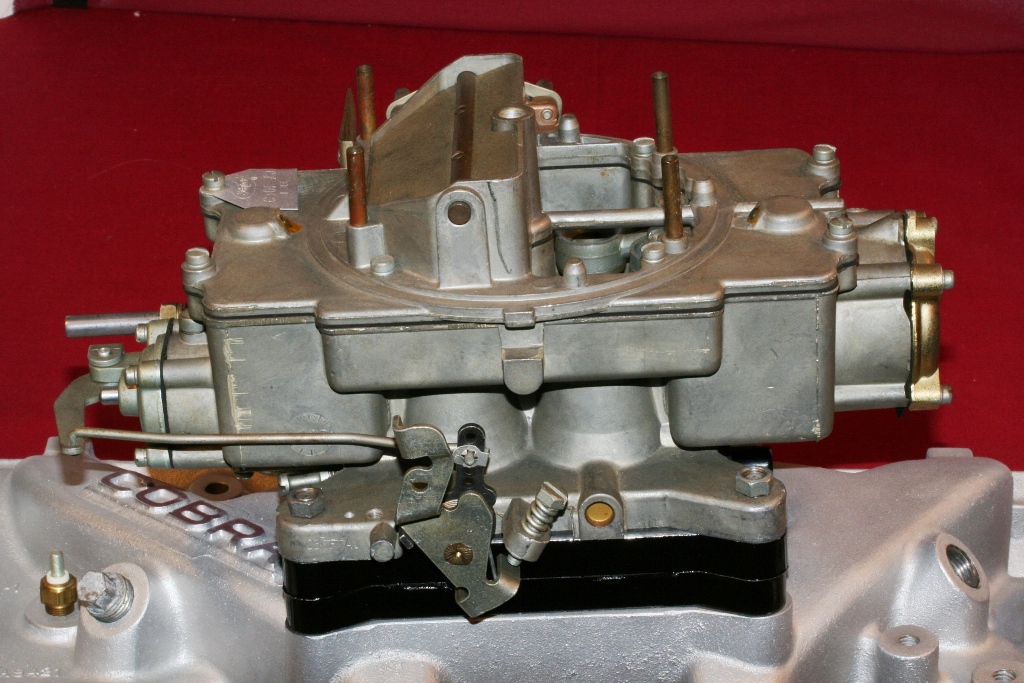
C3OF-9510-AJ (1964½ assembly version), about late November 1963 through about the second week of May 1964. (Ford changed some parts and or finishes in 4100-A series carburetors between 1963¾ and 1964½ model year versions. Most changes are not readily detectable in a single picture.)
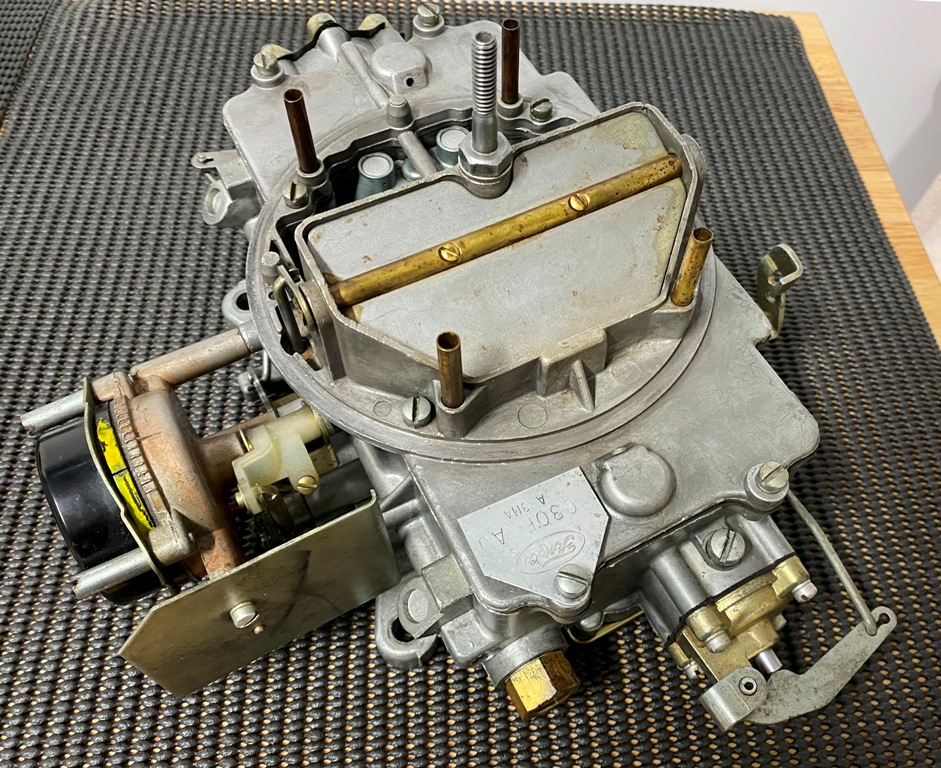
C4OF-9510-AL manual choke, used on very late 1964 model year HP289 engines made about the third week of May 1964 through July 1964. HP289 engines, five bolt ones, were introduced into Ford Fairlane and Mustang production using manual choke carburetors about June 8, 1964. (I have not come across pictures of Cobra with an engine made in this time frame with original engine completely intact to study)
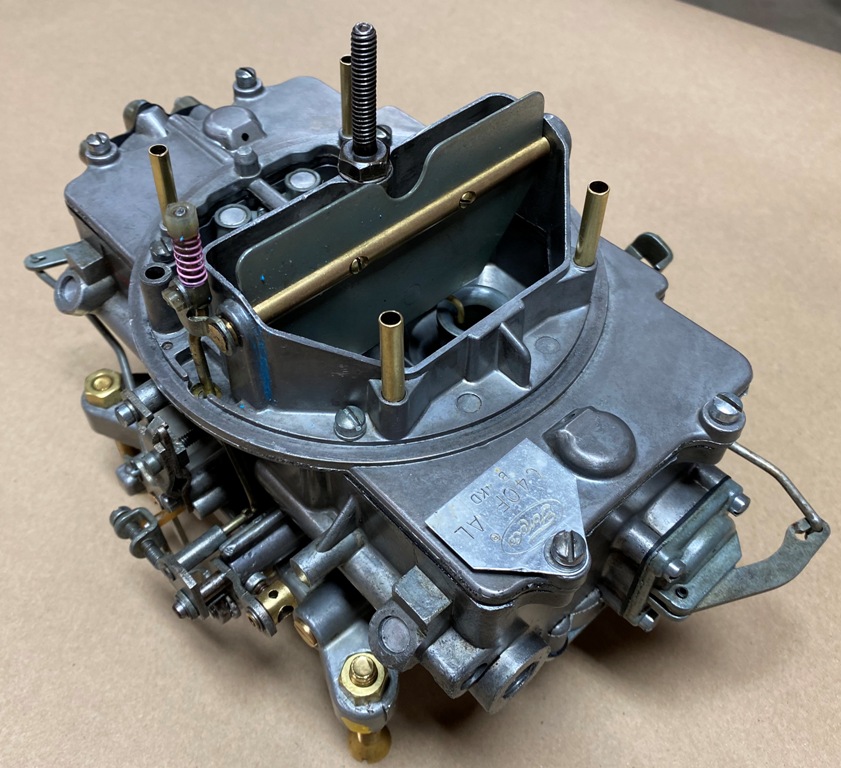
C4OF-9510-AL manual choke, the 48 strange HP289 engines (an odd mix of 1964 and 1965 model year parts) Ford Motor Company made for Shelby American, Inc. for new Cobras in late August 1964.
C4OF-9510-AT manual choke, one of the rarest production carburetor assemblies Ford ever released, used in 13 of the 15 late Cobras with 1965 Fairlane automatic transmission HP289 engines.
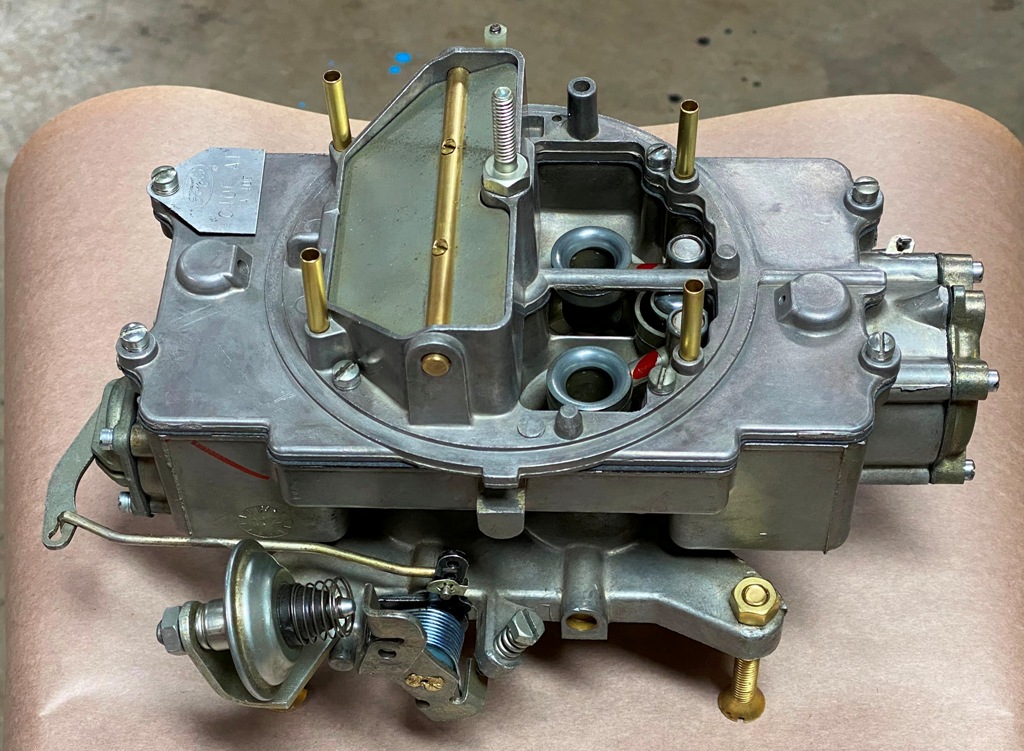
All of these assemblies are 1.12 size carburetors. Ford called them 600 c.f.m. carburetors at sea level and standard conditions with no air cleaner. In use most independent tester obtained mid 500 c.f.m. values (no air cleaner).


